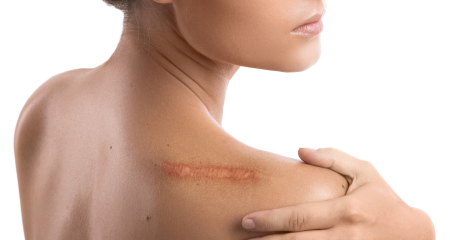
The team at Northstar Dermatology has extensive experience treating and removing keloid scars. Keloids present as raised or irregular scars on the skin and can develop into lumps, ridges, or nodules. Some keloid scars eventually become tender, itchy, or painful, making treatment or removal necessary. Discuss keloid scar treatments with a specialist by contacting our office today.
A keloid scar is an excessive growth of scar tissue that appears following a surgical procedure, piercing, or injury to the skin. While keloid scars can affect everyone, they are most frequently observed in those with darker skin tones. Although keloid scars are not dangerous, they can become bothersome, painful, or gradually expand, leading to cosmetic concerns.
A common treatment for keloid scars is steroid injections, used to reduce inflammation and decrease the scar’s size. Multiple sessions of injections are usually required to achieve the best results. If the keloid does not respond to corticosteroids, other medications may be administered as well. While keloids can be surgically removed, they often reoccur afterward since they result from trauma to the skin. Your dermatologist might prescribe a series of steroid injections in the afflicted area to help keep this from happening.
To discuss keloid scar treatments further, contact our office today.
